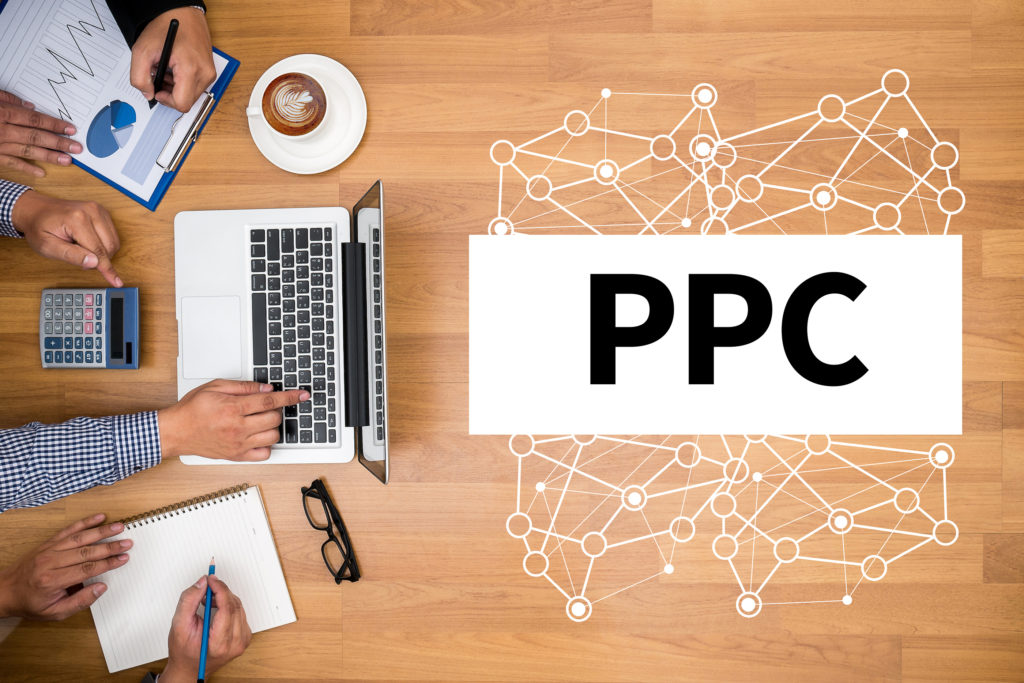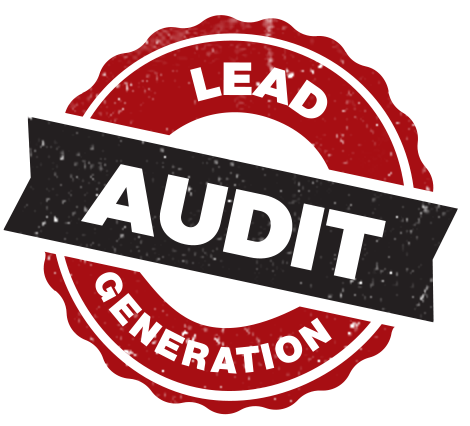Posted by Rich Harshaw on July 25, 2017.
.

I subscribe to the email lists of some other marketers.
(Yep, ol’ Rich still likes learning new things from other experts.)
One of them sent me an email last week that described how he purchased a book from internet marketer Ray Higdon called Go For No.
I haven’t read the book, but the Amazon description says, “[Go For No] deals with rejection in network marketing, selling in network marketing, and creating the right mindset to be successful in network marketing.”
But that’s not the interesting part of the story.
When the book arrived at the house of the guy whose list I’m on, it came with a note that appeared to be scrawled in a child’s handwriting.
The note said:
“One day I asked my daddy for a cookie but my daddy didn’t let me have a cookie. So I asked for a cookie but he didn’t let me have a cookie. So I asked for a cookie and he didn’t let me have a cookie. So I asked for a cookie and he let me have a cookie. The end.”
This note made me think about you, John or Jane Q. Contractor, and how you close your leads.
Here’s why…
Many contractors give up on prospects way too fast. They figure if they don’t hear from a prospect after one follow-up call or two measly postcards, the prospect is not interested.
I presume the “child’s” note was written by Ray Higdon (the author of the book) to demonstrate that repetition is a crucial part of marketing.
If you don’t follow up—and follow up again and again and again—you’re losing out on a huge chunk of profits. (or cookies, if you’re a kid.)
This goes double for contractors.
Do you realize how much hem-hawing homeowners do when choosing a contractor?
Of course you do—you experience it every day.
- You experience it when prospects say “I’ll think about it and get back to you” after your sales meeting.
- You experience it when they give you their contact info at a home show but don’t set an appointment.
- You experience it when they call you for a “ballpark price” because they’re “currently price shopping.”
These types of prospects might seem like dead ends, but think about it this way: They have expressed interest in a home improvement project. And they discussed their project with YOU.
So…
Do. NOT. Give. Up.
Market to these prospects relentlessly. Get yourself in front of their faces as often as possible. It doesn’t cost as much as you think, and you’ll experience a great ROI for your efforts.
For proof, head over to this blog post where I break down the numbers on the surprisingly large sum of money you can dedicate to follow-up marketing… and the outstanding results you can experience when you follow through.
Posted by Rich Harshaw on July 25, 2017.

Everybody likes a new car warranty.
Besides being included for free, new car warranties have high-perceived value because it’s easy for people to imagine a disaster. All vehicles have a decent chance of messing up somehow, and the cost to repair it can be catastrophically expensive.
Warranties on electronics are a little different.
Many electronics are so cheap and unlikely to break that the value of a warranty is low.
Seriously… why pay $24.99 for a five-year warranty on a $100 printer? It’s just easier to buy a new printer.
Conversely, it’s probably worth the extra seven bucks per month for a full replacement warranty on your high-school daughter’s $700 iPhone. It’s almost guaranteed to be dropped multiple times, fall into a swimming pool, or get misplaced at the mall sometime within its two-year contract.
So for electronics, the perceived value of the warranty depends on the perceived threat (or lack of threat) of large repair bills.
This brings us to your window warranty.
It’s hard for a homeowner to envision the exact kinds of things that can go wrong with their new windows (this also goes for home improvement projects like siding, roofing, kitchens, and so on).
So when you tell a customer your windows have a 25-year warranty, it doesn’t mean much to them.
They don’t “get” things like defects in exterior cladding, missing flashing, and damaged glazing. And in the event that something does go wrong, your customer believes it will be so far in the future that it’s not worth worrying about right now.
So your awesome warranty becomes just another semi-meaningless bullet point on a list of cool features you offer… unless your warranty covers glass breakage.
Everybody can relate to broken glass. Who hasn’t had to deal with a broken window in their life?
They’re like flat tires—it’s not a matter of “if,” but “when.”
And that’s the beauty of covering broken glass in your window warranty.
It’s the one thing that no one would expect to be included in a warranty. Broken windows are almost always the customer’s fault; nobody would ever expect YOU to cover THEIR carelessness.
Which is exactly what makes glass-breakage coverage so powerful.
Yes, powerful.
Think about it…
By warranting broken glass, you have a unique selling advantage against the competition.
When prospects hear about it, they’ll instantly form an image in their heads of a baseball or football or golf ball crashing through a window.
And then they’ll be amazed that you’ll fix it. No questions. No cost.
But wait… won’t you get annihilated on service requests?
No. Here’s why…
Surprisingly, few customers will take you up on the offer.
Some won’t remember that you offer it.
Others might be embarrassed to request free service because they know the broken window was their fault.
And, to be perfectly honest, there just aren’t THAT many broken windows.
Case in point…
One of my clients has been offering a broken glass warranty for about 18 years. He’s installed windows for over 3,000 customers.
Guess how many service calls he gets per year to fix broken glass?
About four. PER YEAR.
To make the repair, it costs him about a hundred bucks (glass and labor included).
Most customers expect to pay something, and they’re thrilled when there is no charge. And thrilled customers leads to repeat business, referrals, great reviews, and more trust among you and homeowners.
So if you want a distinct selling advantage over your competitors, offer a warranty on broken glass.
It costs the equivalent of pocket lint, and you gain a huge edge on other contractors in your area.
P.S. Want the peace of mind a broken-glass warranty provides customers… but with your marketing? Check out MYM PPC. We promise hot-and-ready leads for a two hundred dollar Cost Per Lead or less.
Posted by Rich Harshaw on July 17, 2017.

My dad was a real estate guy. And when I was young, he taught me the value of knowing your numbers.
When he dropped me off at BYU my freshman year, he gave me the calculator I still use to this day (I won’t say “over twenty-five years later,” because I’d be dating myself): the HP-12C Financial.
The thing is older than my oldest child, but it still works like a charm.
Since it’s a financial calculator, it calculates everything “backward,” which makes it confusing for the uninitiated. Seeing someone try to use it is like watching a caveman trying to operate an iPhone.
It’s pretty fun to witness.
Regardless of how you like to crunch your numbers, though, make no mistake—your calculator is your most important marketing tool.
By knowing your numbers, you can determine your marketing budget and how much advertising you can accomplish.
Let me show you a wild example.
An HVAC company wanted to target homeowners whose heat pumps were likely to fail within the next few years with a postcard campaign. The company had made a series of about six postcards they’d send every six weeks to a thousand homeowners who had heaters between 10 and 12 years old.
The goal was to get the homeowners to replace their heaters BEFORE they broke down. This would likely happen in the winter, which is a busy season for HVAC companies. Homeowners with broken heaters would have to suffer days in an ice-cold house while the HVAC company tried to fit them into their overloaded rotation.
As I reviewed this client’s marketing strategy, I had an overwhelming sense their campaign was going to fail.
Getting people to spend thousands of dollars on a problem they MIGHT have in the future can be a colossal feat. The client reasoned that “the longer you wait to replace your heat pump, the bigger the failure risk” would get people to take action.
I countered with “the longer a homeowner’s heat pump works, the more convinced they’ll become that it will never break.”
An ounce of prevention might be worth a pound of cure. But when we’re talking about people parting with their money, spending oodles of it on preventative measures isn’t something most folks are dying to do.
Think about it… do people buy treadmills BEFORE they get fat? Or those extended television warranties the cashier at Best Buy always tries to hock?
Nope.
But then the client told me something that changed the playing field.
He said it’s not a matter of “if” these heat pumps will fail—they WILL fail, guaranteed.
He said these heat pumps NEVER last longer than 13 years, so homeowners with a 10-year-old heating pump would without a doubt need one within the next 36 months. Period.
I asked him how sure he was the pumps would fail. I asked, “Would you bet your life that 100% of the pumps will fail by the time they’re 13?”
He said he’d bet his life that 90 percent of them would.
Time to bust out the ol’ HP-12C.
The client’s average sale was $8K with a gross profit of $3.5K. So 1,000 prospects on the client’s list is $3.5 million in potential gross over the next three years—$3.15 million if you exclude the 10% of heat pumps that might not fail.
Think about that—a guaranteed $3.1 million in gross profits over the next three years… just sitting there, ripe for the plucking.
Are you salivating yet?
A better question… how much cash would you be willing to spend to get that $3.1 million?
If it were me, I’d spend at least 10 percent of that number: $310K.
Why? So I could unleash the Wall Drug method (incessantly hammering prospects with your marketing message).
To start, I’d send one 6” x 11” inch postcard per week to each of the 1,000 prospects. That’s 52,000 postcards a year for three years, totaling roughly 150,000.
If every postcard costs 60 cents to send, the total cost for the 36-month campaign would be only $90K.
This is chump change compared to the anticipated gross profit, so let’s bump it up to two postcards per week—a little more than 100 per year per prospect. That’ll cost $180K, not including all the customers we’d remove from the list once they actually become customers and we quit mailing them. And we’ve still got $130K and change to spend.
Next, we’ll get a little old school. I’d hire a college-aged kid to knock on every one of those 1,000 doors every month.
If he knocked five days a week, he’d have to hit only 50 doors per day—easily done assuming all the homes are in a reasonably close proximity. After a couple months go by, the homeowners would immediately recognize my door knocker as the dude from the company that sends all the postcards that keeps coming by. If I paid that door knocker $3,000 per month, it would eat $108K out of my three-year budget—leaving me with just $72K remaining.
So let’s think of something fun to do with the remaining 70 grand. How about creating something for my door knocker to hand to people when he knocks their doors? Like fridge magnets. Or calendars. Or an ice cream scooper. Something—anything—for crying out loud.
At this point, you might be thinking, “Uh, Rich… so what message goes on all of these marketing touches?”
Here’s the thing: At the rate, we’re hitting prospects, it almost doesn’t matter what I put in the marketing message, as long as it’s something like “Hey, we can replace your freaking heat pump when it goes out?”
Seriously—this is more about what the calculator says than the messaging.
Now put yourself in your prospect’s shoes. Imagine receiving multiple postcards per week from an HVAC company warning you that your heat pump will most definitely fail within three years. How many weeks would it take before you started noticing the postcards? As in, “Hey, this company is sending me a crap load of mail!”? Around four or five weeks, probably.
Now think ahead 18 months. You’ve received two pieces of mail from the company every week for a year and a half, and the college kid has knocked on your door about 20 times. Is there any chance at all that you’re not aware of who this company is? Is there any conceivable way you DON’T know why this company is contacting you? No way, José.
This is what I call “Wall Drugging” potential customers. Hit them so often that they can’t help but recognize your name and brand.
Listen. I don’t want to hear, “But my company is different. We don’t sell heat pumps, and we don’t know exactly who our customers will be.” The moral of the story is to look at your numbers and determine how much you can spend to acquire a new sale.
How could you best spend that money? Use your calculator to find answers to these questions. You just might find a formula for success that you hadn’t expected.
Compliments of HP.
Save
Posted by Rich Harshaw on July 17, 2017.

One of the biggest things that set apart MYM PPC from other PPC services is our head-spinningly in-depth reporting.
If there’s something to track, we track it…
- Cost per lead
- Cost per click
- Impressions
- Impression share
- Chats
- Calls
- Missed opportunities
I could go on and on, but I want to make this quick. So I’ll let MYM client Jon Voss of The Door Store take over:
“We tried about four PPC companies prior to MYM. What we didn’t like about those companies was confusing reporting that wasn’t very detailed. We didn’t see much ROI either. The reporting we have been getting with MYM has been good and easier to follow than other reporting we had with other companies. Working with PPC Services Manager has been great too. He does a good job responding to questions and getting done what he says he will do.”
As you can see, we don’t just track everything… we also distill it into easy-to-grasp reporting that we personally review with you.
So even if you have zero clue about impression shares, CTRs, and all that other technical stuff, you don’t have to sweat it—we break it all down for you.
To see an example of our PPC reporting, read this blog post. And for more details about our PPC services as a whole, visit our PPC page.
You can also find out more by calling us or talking to one of those pretty Customer Service faces that pop up in the online chat box on our website.
P.S. You have an incredibly powerful marketing tool collecting dust in your desk drawer right this second, and you don’t even know it. Next post, I’ll tell you what it is and how to harness its little-known powers.
Save
Save











